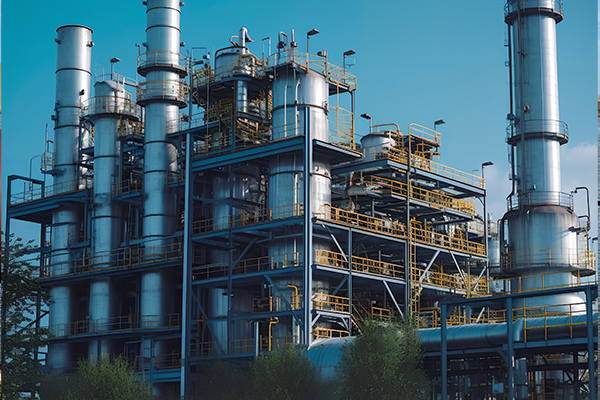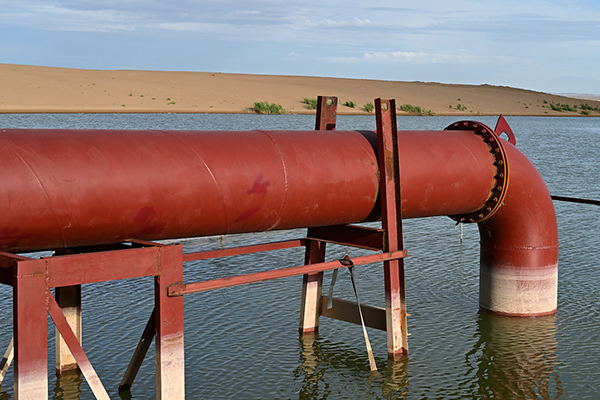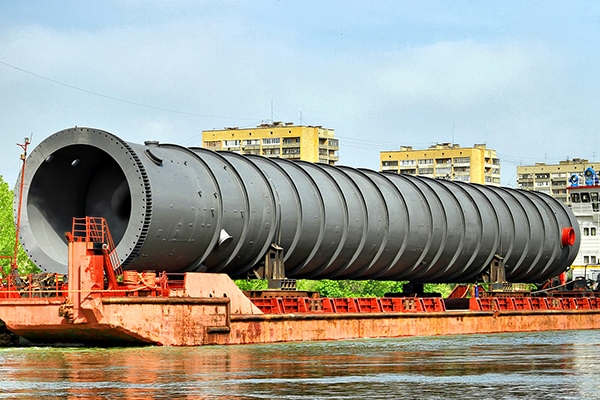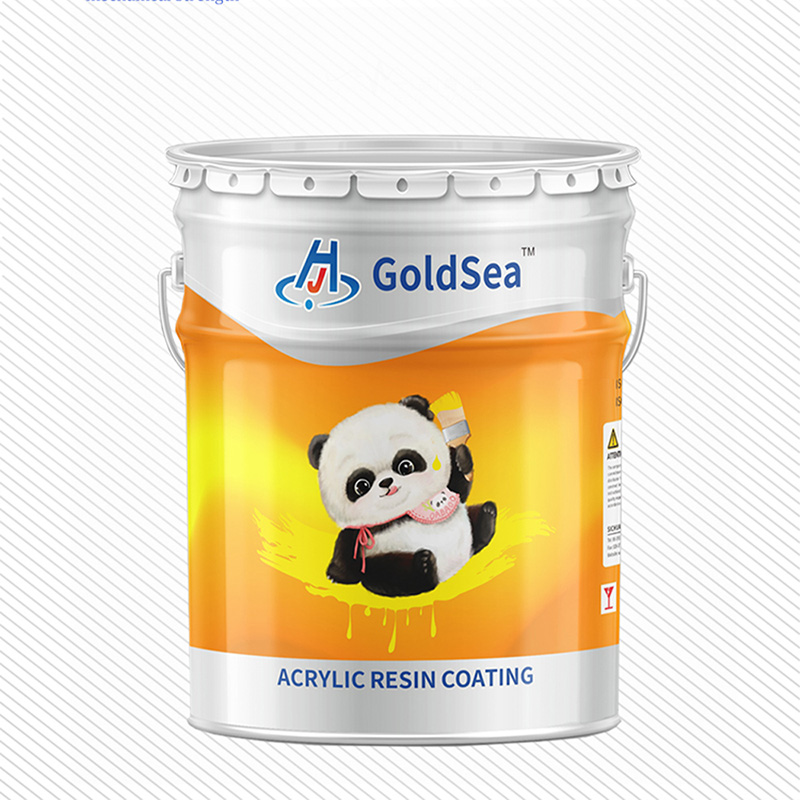Characteristics of YC-8501 Heavy-duty Anti-Corrosion Nano-Composite Ceramic Coating (Gray, two-component)
Product components and appearance
(Two-component ceramic coating
YC-8501-A: A component coating is a gray liquid
YC-8501-B: B component curing agent is a light gray liquid
YC-8501 colors: transparent, red, yellow, blue, white, etc. Color adjustment can be made according to customer requirements
Applicable substrate
Carbon steel, stainless steel, cast iron, titanium alloy, aluminum alloy, copper alloy, glass, ceramic, concrete, artificial stone, fiberglass reinforced plastic, ceramic fiber, wood, etc.

Applicable temperature
-
The long-term operating temperature range is -50℃ to 180℃, and the maximum temperature resistance must not exceed 200 degrees. When the usage temperature exceeds 150 degrees, the coating becomes harder and its toughness decreases somewhat.
- The temperature resistance of the coating will vary accordingly depending on the temperature resistance of different substrates. Resistant to cold and heat shock and thermal vibration.

Product features
1. Nano coatings are environmentally friendly and non-toxic, easy to apply and save paint, have stable performance and are convenient to maintain.
2. The coating is resistant to acids (60% hydrochloric acid, 60% sulfuric acid, nitric acid, organic acids, etc.), alkalis (70% sodium hydroxide, potassium hydroxide, etc.), corrosion, salt spray, aging and fatigue, and can be used outdoors or in high-humidity and high-heat working conditions.
3. The nano-coating is optimized and compounded with multiple nano-ceramic materials. The coating has remarkable corrosion resistance, such as resistance to salt water (5%NaCl for 300d) and gasoline (120# for 300d).
4. The coating surface is smooth and has hydrophobic properties, with a hydrophobic Angle of approximately 110 degrees, which can prevent Marine microorganisms from adhering to the coating surface.
5. The coating has a certain self-lubricating function, a relatively low coefficient of friction, becomes smoother with grinding, and has good wear resistance.
6. The coating has a good bond with the substrate (with a bonding force greater than grade 1), a bonding strength greater than 4MPa, a high coating hardness up to 7 hours, and excellent wear resistance (750g/500r, wear amount ≤0.03g).
7. The coating has excellent density and outstanding electrical insulation performance.
8. The coating itself is non-flammable and has excellent flame-retardant properties.
9. When applied to Marine anti-corrosion equipment, such as deep-sea testing instruments, oil pipelines, Bridges, etc., it has excellent anti-corrosion properties.
10. Other colors or other properties can be adjusted according to customer requirements.
Application fields
Steel structures such as Bridges, railway tracks, and ship hulls, corrosion-resistant shells, corrosion-resistant chassis, anti-corrosion parts for conveyor belts, and filter screens
2. Erosion-resistant and anti-corrosion blades, turbine blades, pump blades or casings.
3. Corrosion-resistant components for road traffic, building decoration materials, etc.
4. Anti-corrosion protection for outdoor equipment or facilities.
5. Heavy-duty anti-corrosion for power plants, chemical plants, cement plants, etc.
Usage method
1. Preparation before coating
Paint curing: Seal and roll components A and B on the curing machine until there is no sediment at the bottom of the bucket, or seal and stir evenly without sediment. Mix the ingredients in A ratio of A+B=7+3, stir evenly, and then filter through a 200-mesh filter screen. After filtration, it is ready for use.
Base material cleaning: Degreasing and rust removal, surface roughening and sandblasting, sandblasting with Sa2.5 grade or above, the best effect is achieved by sandblasting with 46-mesh corundum (white corundum).
Coating tools: Clean and dry, must not come into contact with water or other substances, otherwise it will affect the efficacy of the coating or even render it unusable.
2. Coating method
Spraying: Spray at room temperature. It is recommended that the spraying thickness be around 50 to 100 microns. After sandblasting, clean the workpiece thoroughly with anhydrous ethanol and dry it with compressed air. Then, the spraying process can begin.
3. Coating tools
Coating tool: Spray gun (diameter 1.0). The atomization effect of a small-diameter spray gun is better, and the spraying effect is superior. An air compressor and an air filter are required.
4. Coating treatment
It can cure naturally and can be left for more than 12 hours (surface drying in 2 hours, full drying in 24 hours, and ceramicization in 7 days). Or place it in an oven to dry naturally for 30 minutes, and then bake it at 150 degrees for another 30 minutes to cure quickly.
Note: This coating is a two-component one. Mix as much as needed. After the two components are mixed, they must be used up within one hour; otherwise, they will gradually thicken, cure and become unusable.

Unique to Youcai
1. Technical stability
After rigorous testing, the aerospace-grade nanocomposite ceramic technology process remains stable under extreme conditions, resistant to high temperatures, thermal shock and chemical corrosion.
2. Nano-dispersion technology
The unique dispersion process ensures that the nanoparticles are evenly distributed in the coating, avoiding agglomeration. Efficient interface treatment enhances the bonding between particles, improving the bonding strength between the coating and the substrate as well as the overall performance.
3. Coating controllability
Precise formulations and composite techniques enable the coating performance to be adjustable, such as hardness, wear resistance and thermal stability, meeting the requirements of different applications.
4. Micro-nano structure characteristics:
Nanocomposite ceramic particles wrap micrometer particles, fill the gaps, form a dense coating, and enhance compactness and corrosion resistance. Meanwhile, nanoparticles penetrate the surface of the substrate, forming a metal-ceramic interphase, which enhances the bonding force and overall strength.
Research and development principle
1. Thermal expansion matching issue: The thermal expansion coefficients of metal and ceramic materials often differ during heating and cooling processes. This may lead to the formation of microcracks in the coating during the temperature cycling process, or even peeling off. To address this issue, Youcai has developed new coating materials whose coefficient of thermal expansion is closer to that of the metal substrate, thereby reducing thermal stress.
2. Resistance to thermal shock and thermal vibration: When the metal surface coating rapidly switches between high and low temperatures, it must be able to withstand the resulting thermal stress without damage. This requires the coating to have excellent thermal shock resistance. By optimizing the microstructure of the coating, such as increasing the number of phase interfaces and reducing the grain size, Youcai can enhance its thermal shock resistance.
3. Bonding strength: The bonding strength between the coating and the metal substrate is crucial for the long-term stability and durability of the coating. To enhance the bonding strength, Youcai introduces an intermediate layer or transition layer between the coating and the substrate to improve the wettability and chemical bonding between the two.


















